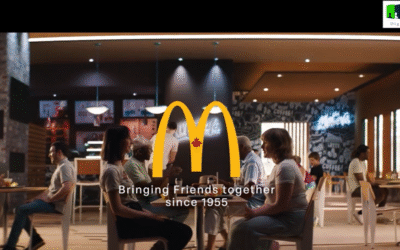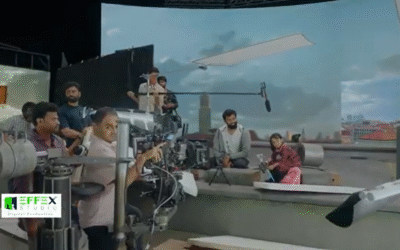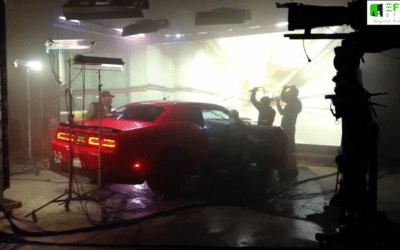Introduction
As filmmaking evolves, creators are increasingly looking for smarter, more flexible production methods. Virtual production advertising has emerged as a game-changing workflow—transforming the way content is developed, captured, and delivered. Once used primarily in gaming and broadcast, real-time 3D rendering, LED wall environments, and camera tracking are now being adopted for cinematic storytelling and high-end commercials. This case study unpacks the full workflow of virtual production advertising, illustrating how it supports faster execution, richer visuals, and better creative control.
Objective
The aim was to simulate a real-world production cycle using virtual production advertising tools—demonstrating how real-time environments, lighting, and camera movement can harmonize on set. The project set out to show how a complete narrative scene could be captured with final-pixel precision, minimizing the need for post-heavy workflows and offering a high level of visual consistency.
Challenges
Traditional productions face multiple friction points: travel-heavy location shoots, inconsistent lighting, delayed feedback loops, and long VFX pipelines. These constraints often delay delivery, complicate revisions, and fragment the creative process. The goal of adopting a virtual production advertising approach was to solve these inefficiencies by introducing a real-time, collaborative, and visually rich system of execution.
Execution Process
1. Pre-Visualization
Using Unreal Engine, the team mapped out all key camera angles, lighting placements, and scene transitions. The digital pre-visualization allowed directors, cinematographers, and art departments to agree on the visual language of the film before stepping onto the set. This helped ensure alignment across all teams and minimized on-set experimentation.
2. Asset Creation
Environments such as city streets, interiors, and atmospheric landscapes were modeled and optimized for real-time display on LED panels. These digital sets were rendered in high fidelity and calibrated to respond to changes in lighting and perspective. Asset development was tailored for performance in a virtual production advertising context, ensuring quick load times and seamless interactivity.
3. Tech Setup & Integration
A studio volume was outfitted with a curved LED wall and ceiling array. Cameras were configured with precision motion-tracking systems synced with Unreal Engine. As the camera moved, the virtual environment shifted accordingly, preserving parallax and real-world depth. This hardware-software integration is the backbone of virtual production advertising, enabling live compositing during principal photography.
4. Virtual Scouting
Using VR headsets and on-set monitors, the director and DOP virtually navigated the digital set prior to the shoot. They finalized shot composition, actor blocking, and lighting setups. This virtual production advertising feature allowed the team to iterate creatively without spending additional time or resources on physical setup changes.
5. In-Camera VFX Shooting
With digital environments playing live on the LED walls, actors performed in a fully reactive scene. Reflections, lighting tones, and shadow behavior all responded naturally to actor placement and movement. The real-time rendering delivered immersive, final-quality shots directly in-camera—removing the need for chroma key work or complex post compositing.
6. Post-Production
Since the majority of visuals were captured live, post-production focused only on light color correction and editorial tightening. No elaborate VFX layering or green-screen cleanup was required. This efficiency is one of the major benefits of virtual production advertising, as it reduces both time and cost while preserving creative intent.
Conclusion
This case study highlights how virtual production advertising is reshaping the future of filmmaking. By integrating real-time 3D assets, LED volumes, and live-tracked cameras, creators can achieve cinematic results inside a controlled studio. This approach not only enhances creative flexibility but also streamlines production and post workflows—making it a highly scalable model for both feature films and commercial storytelling.
Key Takeaways
- Virtual production advertising enables real-time storytelling without location constraints
- LED wall environments deliver authentic lighting and reflections in-camera
- Pre-visualization aligns departments and reduces trial-and-error
- Real-time capture cuts down post-production significantly
- Asset reusability makes this workflow scalable for different projects
- A virtual studio for advertising supports high-quality, repeatable content delivery



